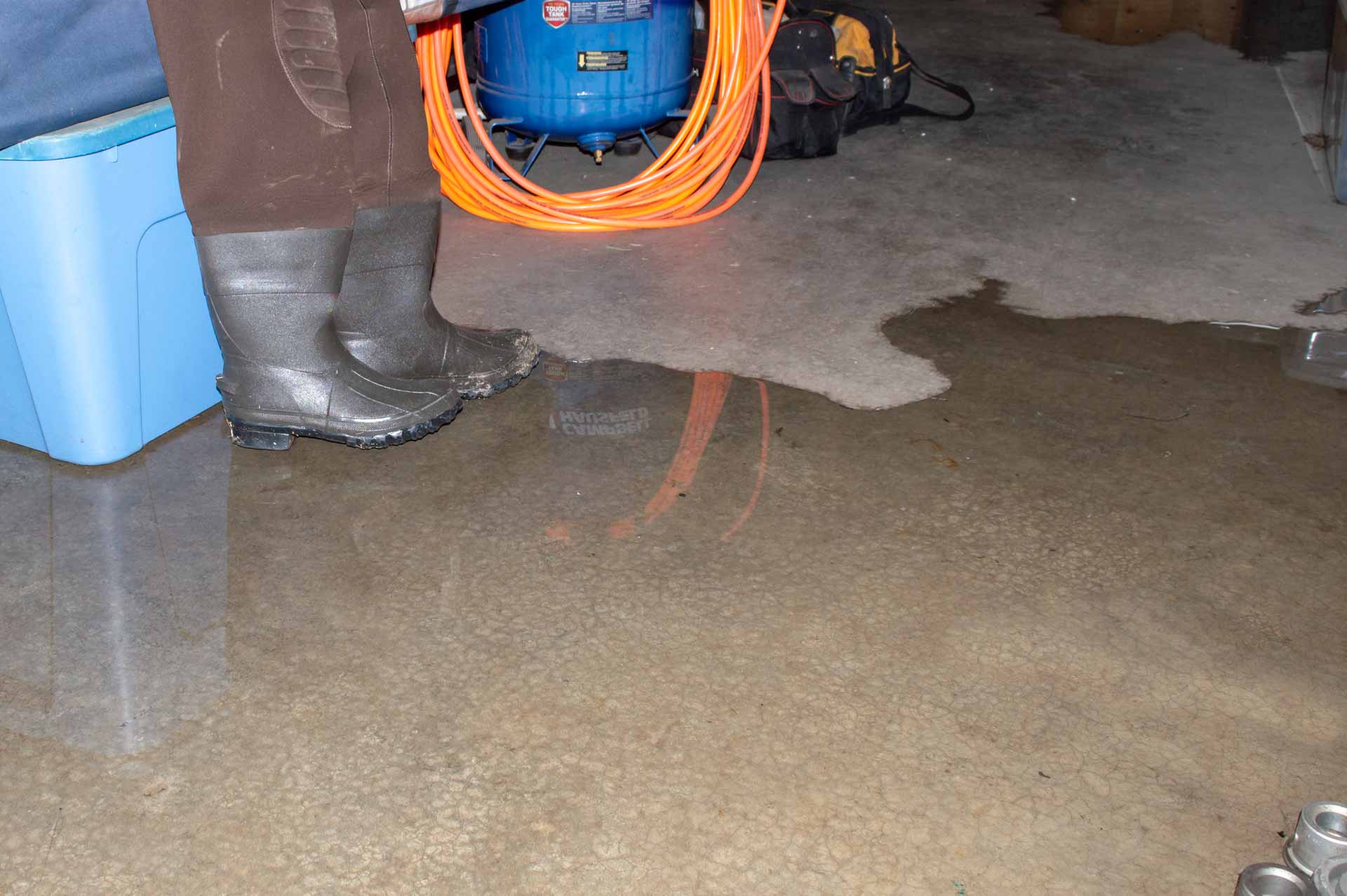If you experience a basement flood, it can be hard to know what to do first to fix the problem. Here are a few straightforward steps to help you get your home back on track.

Stay Safe While You Assess
While it may be tempting to rush in to salvage belongings or remove water after a basement flood, it’s critical to take a moment to consider potential safety issues. Possible safety concerns include:
- Electrical shock
- Mold and mildew growth
- Contaminated water
Electric Shock Risk
Electric shock is a serious safety hazard in a flooded basement. Even a small amount of water can conduct electricity, putting your health and your life at risk. Before anything else, shut off your home’s power. Use other light sources, such as flashlights, headlamps, or lanterns, to assess the situation.
Mold and Mildew Concerns
Mold and mildew can quickly grow when water is present. While mold growth may not pose a risk to everyone, individuals with respiratory issues, compromised immune systems, or other underlying health concerns could be severely affected by mildew or mold spores. High-risk individuals should avoid entering a flooded basement and should, ideally, relocate out of the home until all water is removed.
Water Contamination
The water entering your home during a basement flood may not be clean or safe. Sewage, chemicals, and other contaminants are often present, even without visible signs. Before entering a flooded basement, wear gear to create a barrier between your skin and the water. After leaving the basement, wash off your protective gear and any exposed skin. If your clothing has gotten wet, remove and launder it as soon as possible.
Evaluate the Situation
Once you’ve considered safety, you can enter a flooded basement to assess the severity of the flood and the extent of any damage. A thorough appraisal of the area will inform your next steps.
Document the Damage
If you plan to file an insurance claim after a flood, you should document its severity and any resultant damage or losses. Take pictures and video footage of the entire basement area.
Even if you’re not filing a claim, it’s a good idea to document the flood so that you have a record. Accurate documentation can help inform basement waterproofing efforts and storage solutions to keep your basement safe in the future.
Ideally, you should document the flood situation in several stages since you may not see every issue immediately. Comprehensive documentation helps record the full extent of the situation.
Get Rid of the Water
Some water from a basement flood may evaporate or leave via a sump pump or drain system. In many cases, though, you’ll need to remove the water manually using a combination of pumps and a wet-dry vacuum.
Once most visible water is gone, you can start a deeper drying-out process using fans and a dehumidifier. This second step is critical because water will have soaked into the basement structure.
You’ll also need to remove any damp or waterlogged items. The more water you can remove from the basement, the better!
Post-Crisis Follow-Up
After a basement flood, you may want to reevaluate your basement storage. To avoid future water damage, you can purchase watertight storage totes, install off-the-floor shelves, and raise appliances (and other items) up on pallets.
Additionally, consider contacting your local basement waterproofing contractor to evaluate your property. While basement waterproofing isn’t free, it’s well worth the cost to mitigate future flooding issues.
For expert basement waterproofing assistance in Rochester and the region, call BelowDry Basement Waterproofing today. We’re your go-to team for comprehensive basement waterproofing solutions that last. BelowDry Basement Waterproofing is licensed and insured, and we have over 15 years of experience delivering basement waterproofing that works. BelowDry Basement Waterproofing—Solving Your Wet Basement Problem For Good!
